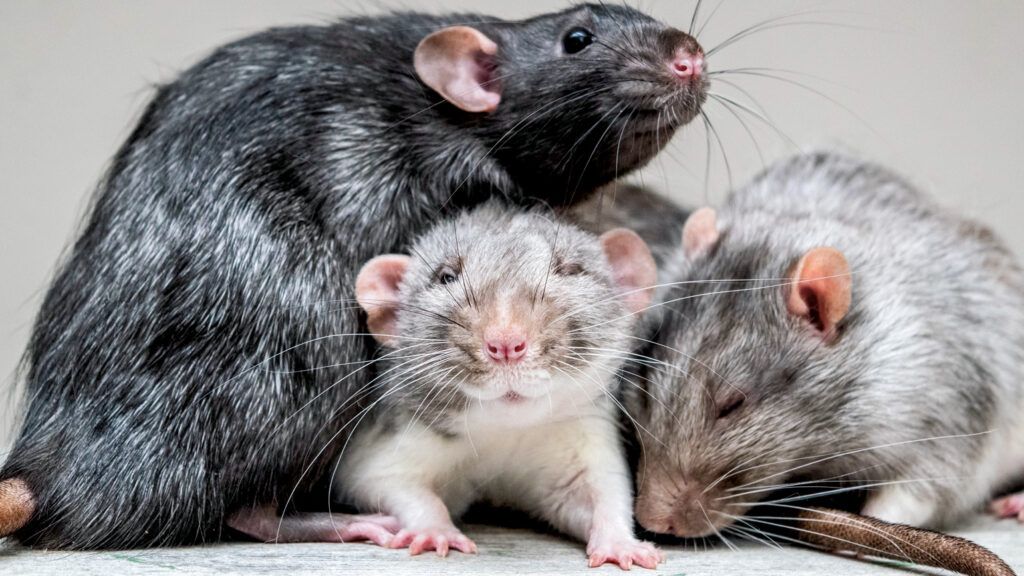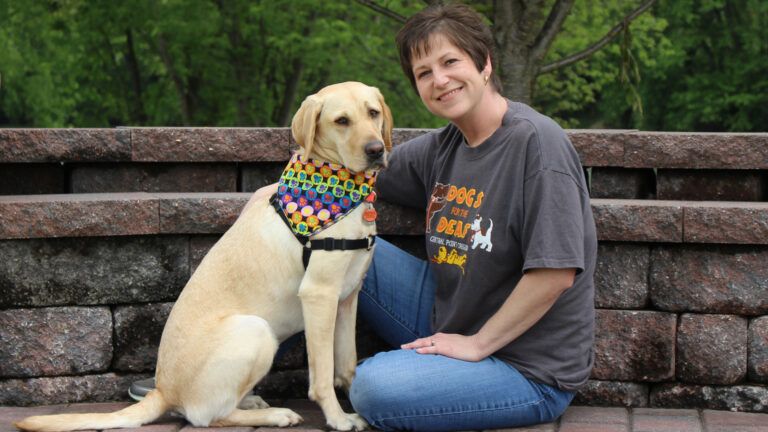The sight of a rat usually elicits screams or, at the very least, disgust. The long tail, twitching nose, scurrying gait and fondness for trash has given the rodent a bad rap. Abby Chesnut, 26, of Dallas, Georgia, has set out to change that perception. She wants people to see rats as she sees them: not creepy, but calming and comforting.
Abby grew up loving all animals, especially her cats, fish and rescue dogs Jada and Bailey. When she decided to get a smaller trainable pet, research led her to rats. “I learned that rats are smart and social,” Abby says.
It was harder than she thought, though, to find a pet rat. She ended up driving a couple of hours from her home to buy her first two, Everett and Delmar, who were both one month old.
After a year of bonding with the duo, Abby came across the local chapter of Compassionate Paws, a nonprofit that registers animals to work in therapy through Pet Partners. They told her that rats had been accepted as potential therapy animals. Abby was excited, but realized she’d need to wait until she had younger rats to train. Since rats live only two or three years and training takes at least six months, “it’s kind of a race against time to get them ready,” Abby says.
Her next two rats were Jasper and Oliver. Jasper had frequent seizures, which ruled him out for therapy. Oliver, though, had potential, so she started to train him immediately, exposing him to the world and all its distractions. “I’d take him to any animal-friendly place,” Abby says. Since rats have poor eyesight, they won’t scurry away from a comfy, familiar spot. “He stayed in his tiny basket, taking it all in.”
Then it was time for their therapy team evaluation. Oliver had to react calmly to loud noises, other animals, strangers and getting wrapped in a towel (known as a “rat burrito”), a common way for rats to be held to keep them from poking with their paws. Abby needed to show she knew how to care for Oliver and how to correct someone who wasn’t handling him well. They passed.
For more than a year, Oliver provided therapy for seniors and stressed out college students. He also sat with elementary-age children who found that reading to a rat was the best way to practice. His successor, Vincent, has a gift for listening to kids read. Abby has witnessed students with autism improve their reading skills dramatically, thanks to sessions with Vincent.
Though Abby gets the occasional request to keep her pets at a distance, for the most part the reaction is positive. “People point, and there are whispers: ‘Is that a rat?’ Then everyone crowds around and their faces light up. Even seniors think they’re cute,” says Abby, whose third therapy rat, Franklin, passed his test a few months ago.
She shares rat therapy advice on her blog, healingwhiskers.com, which has changed readers’ perceptions. “People don’t think of rats when it comes to animal therapy,” she says. “But since I started the blog, people have been inspired by us and ask how they can get certified.”
Right now, there are less than 10 registered therapy rats with Pet Partners in the U.S., largely due to their short life span. Perhaps that number will grow, thanks to Abby, who loves seeing how these underestimated creatures improve others’ lives. “My goal has always been just to make people happy,” she says. “If I can do it with a rat in my hand, even better.”
Find out more about Abby and her therapy rats in The Dog in the Dentist Chair: And Other True Stories of Animals Who Help, Comfort, and Love Kids by Peggy Frezon.
Did you enjoy this story? Subscribe to All Creatures magazine.






